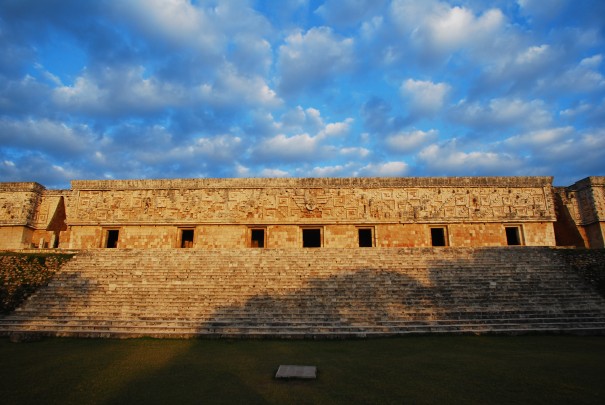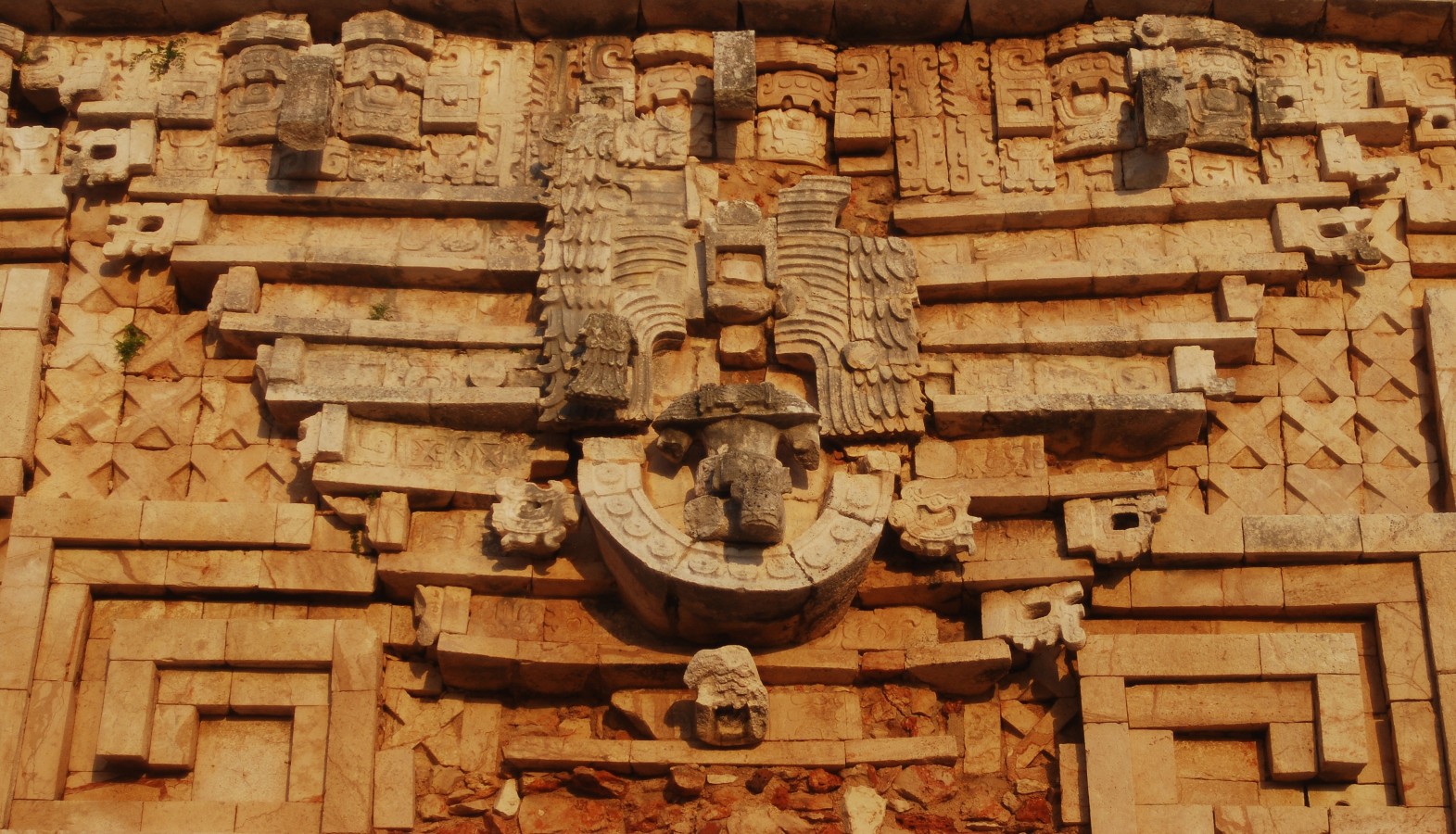The Governor’s Palace is without doubt one of the most important buildings of the whole Mayan world, and it is considered by many as the most extraordinary example of the pre-Hispanic architecture of the Americas. It is a genuine wonder that perfectly merges religious and political symbols.
The facade is impressive because of its delicately worked stone, which has been compared to filigree. On different planes, there are lattices, masks of Chaac and representations of the governors.
There is a sculpture of a governor seated on his throne in the main entrance. He bears an exquisite headdress and is framed by two-headed snakes, a symbol used to represent royal authority. It is probable that this personage is none other than Chan Chak K’ak’nal Ajaw, also known as Lord Chac, one of Uxmal’s most important kings. Significant architectural developments including the Governor’s Palace and the Nunnery Quadrangle are attributed to his reign in the tenth century AD.
The masks of Chaac are a recurrent motif in important Puuc buildings and these are usually presented in cascades. In the Governor’s Palace however, we also find other forms of presentation. In addition to cascades of masks the representations of the rain god cover the whole facade in a zigzag pattern which recalls the twisting movement of a snake.
Throughout the whole Palace we also find representations of the planet Venus, which was the planet most closely studied by the Maya. This planet governed the lives of the ancient Maya, since the priests could tell from empirical observation when the rainy season would begin, or how long the dry season would last. Nonetheless it is impressive that the entire Palace is oriented to recording the movement of Venus and the maximum declination of the sun at the solstices.
All the elements which make up the Governor’s Palace are brought together perfectly in a building which is an immaculate representation of the Mayan system of government. On the one hand we have the representations of Chaac, god of the rains and storms; on the other we have the governor, the master of knowledge, since it was he who gave the people the information they needed about the harvest. In the Puuc, he who controlled the water, controlled the world.








